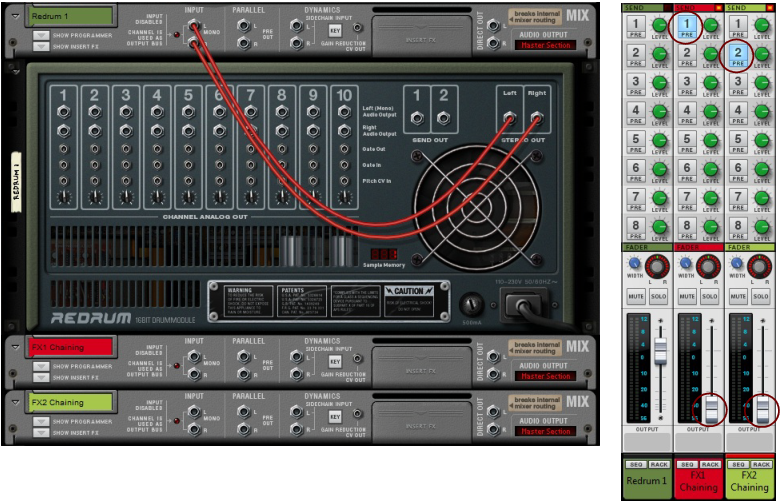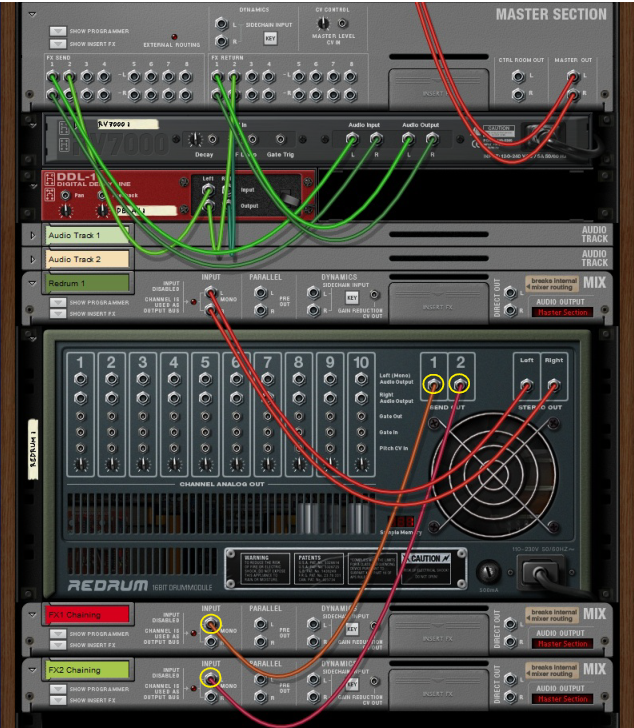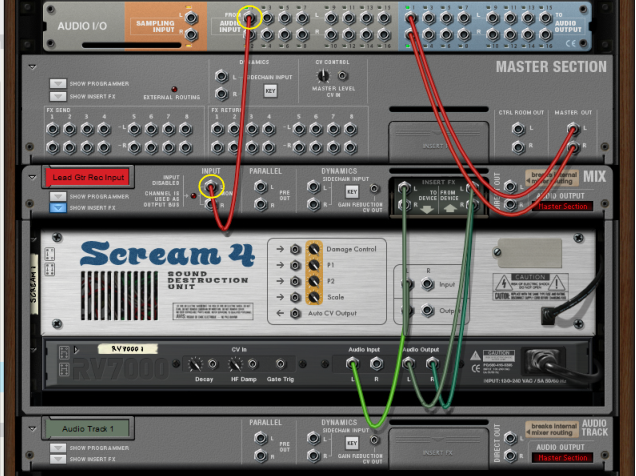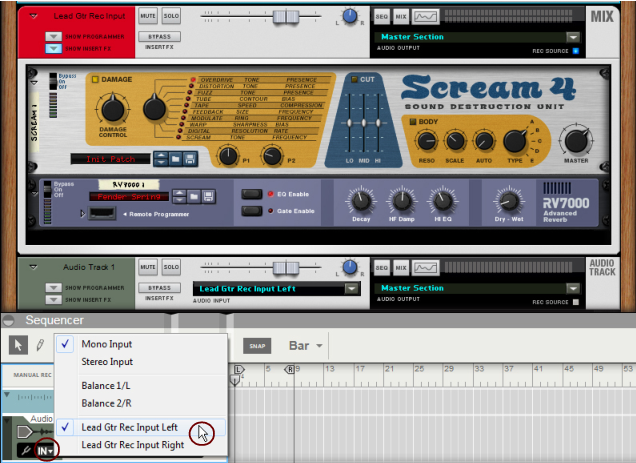|
•
|
Use a “Spider Audio Merger & Splitter” device to split the sidechain signal from the Parallel outputs and/or Insert FX “To Device” output into several signals.
|
See “Output Busses” for information.
Another typical application for compression sidechaining is to use the internal signal of the channel, filter it, and then feed to the compressor via “internal” sidechaining. This type of internal sidechaining can be used for de-essing, for example. No additional patching is required for this; you only have to activate the “Filters to Dynamics Sidechain” button in the Filter or EQ sections. See “About the Filters To Dynamics Sidechain button”.
The Mix Channel and Audio Track devices feature Direct Out connectors. By patching cables into these outputs, you break the internal signal chain from the device to the Master Section, and can route the channel output signals directly to the Reason Hardware Device’s outputs. This is a very nice feature if you want to use outboard mixing or summing - or if you’re using ReWire (see “ReWire”) to route individual channel signals to another application.
Direct routing of individual channel outputs to individual outputs on the Reason Hardware Interface.
Now, you can begin recording on the Audio Track according to the standard recording procedures described in “General recording procedure”. The signal will be processed by the Insert FX of the Mix Channel device before being recorded on the track.







